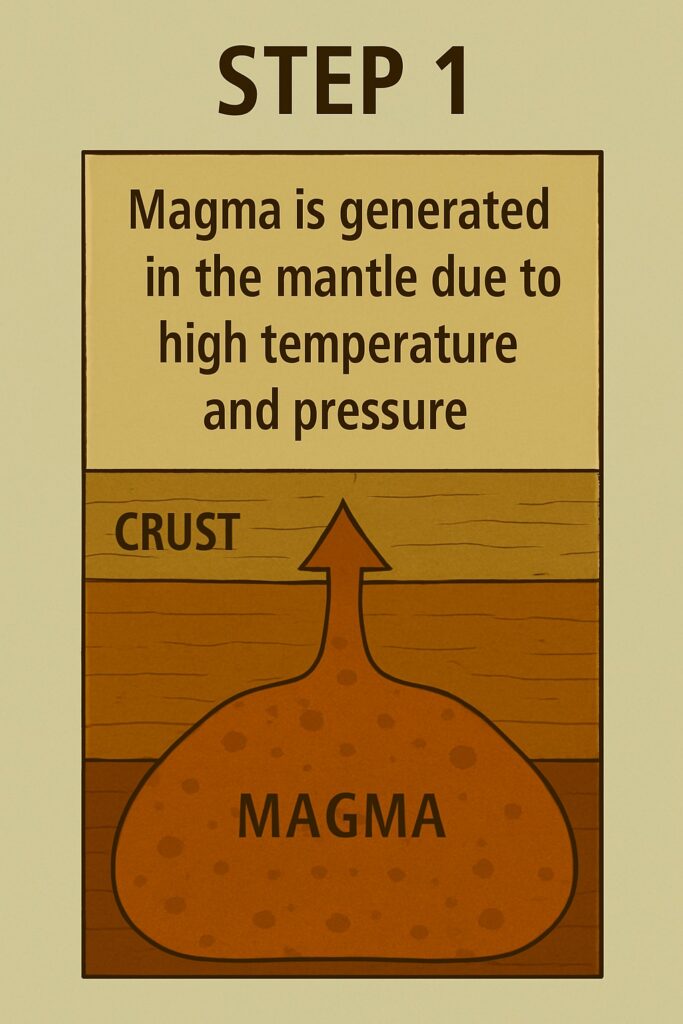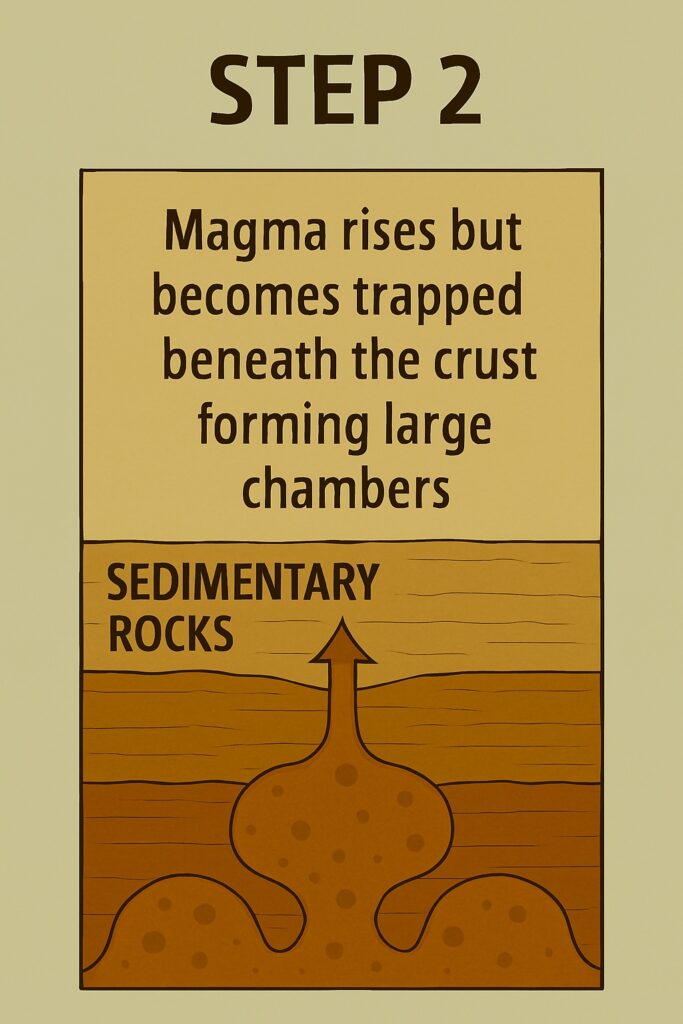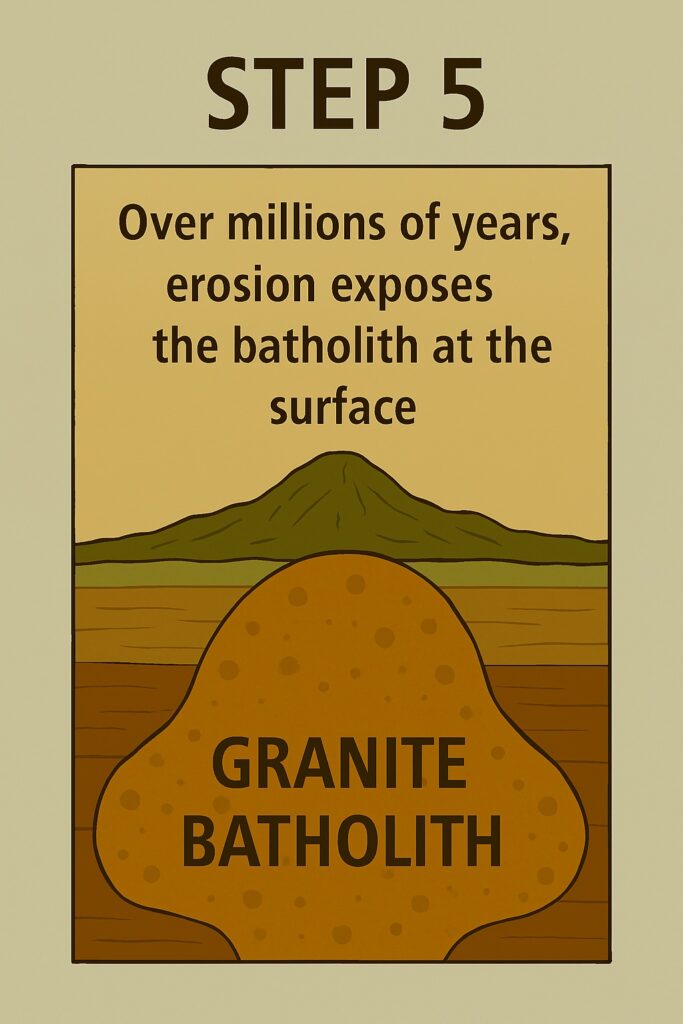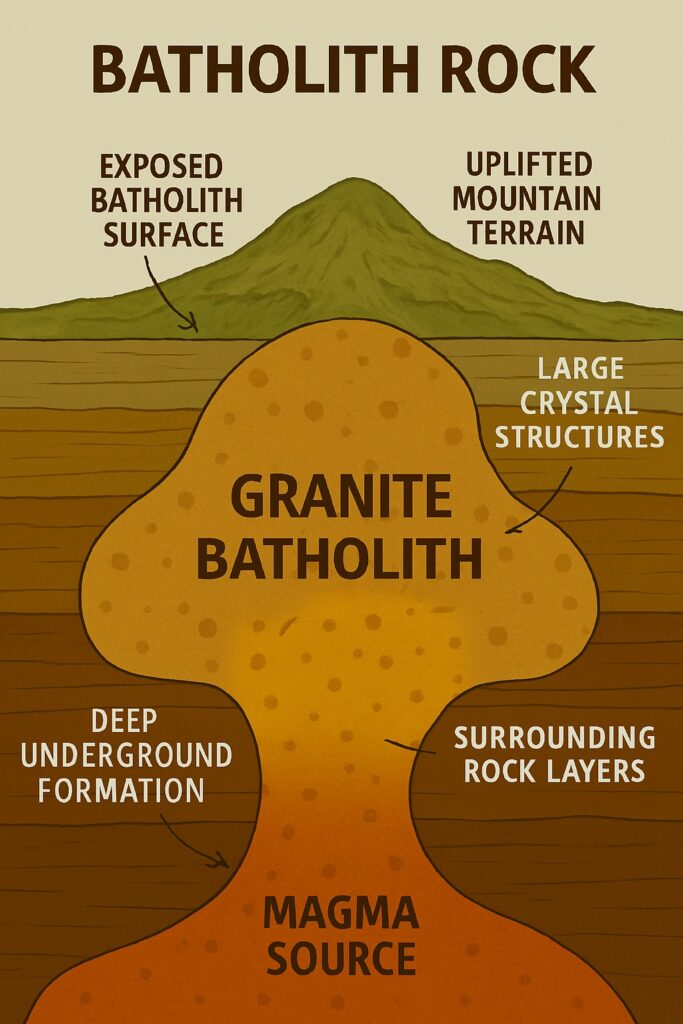Batholiths and Laccoliths are both intrusive igneous rock formations, but they differ in their size, shape, and formation processes. They are formed beneath the Earth’s surface from magma that cools and solidifies. The overlying rocks act as insulation, allowing the magma to cool very slowly over thousands to millions of years.
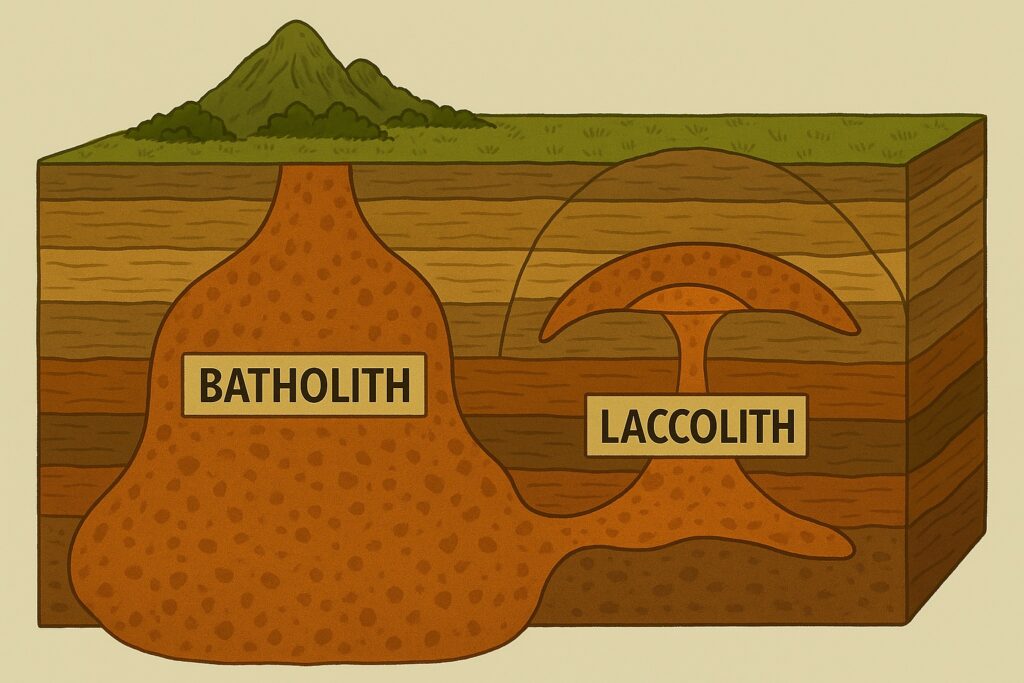
Table of Contents
Batholith Rocks
A batholith is a large, intrusive igneous rock mass formed beneath the Earth’s surface by the solidification of magma. It is characterized by its massive size, typically covering areas of hundreds to thousands of square kilometers. Batholiths are composed of coarse-grained rocks, such as granite, and they often form the cores of mountain ranges. The cooling process of the magma that forms a batholith is slow, allowing for the development of large crystals within the rock. Over time, the overlying rocks erode, exposing the batholith at the Earth’s surface.
The word “batholith” comes from the Greek words “bathos” (depth) and “lithos” (rock), meaning “deep rock.”
Formation of Batholith Rocks
Stage 1: Magma Generation
-
-
Deep inside the Earth, heat and pressure cause rocks in the mantle and lower crust to melt, forming magma.
-
This magma is rich in silica and other minerals and is less dense than the surrounding rocks.

Generation of Magma
-
Stage 2: Magma Intrusion
-
-
The magma rises slowly through cracks and weak zones in the crust.
-
It does not reach the surface, so it gets trapped in large chambers deep underground.

Rise of Magma
-
Stage 3: Slow Cooling and Crystallization
- Since the magma is insulated by surrounding rock, it cools very slowly.
- This slow cooling allows large crystals of minerals like quartz, feldspar, and mica to form, giving the rock a coarse-grained texture.
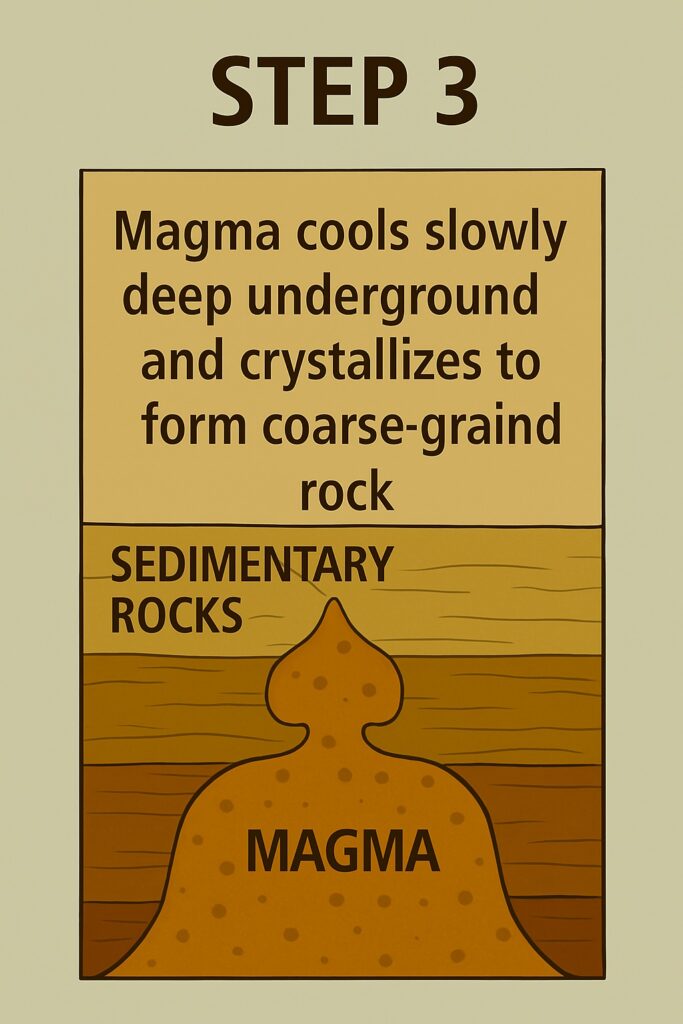
Stage 4: Formation of the Batholith
- Over time, successive intrusions of magma may combine and solidify into a single, massive body.
- This forms a batholith, often spreading over hundreds to thousands of square kilometers.
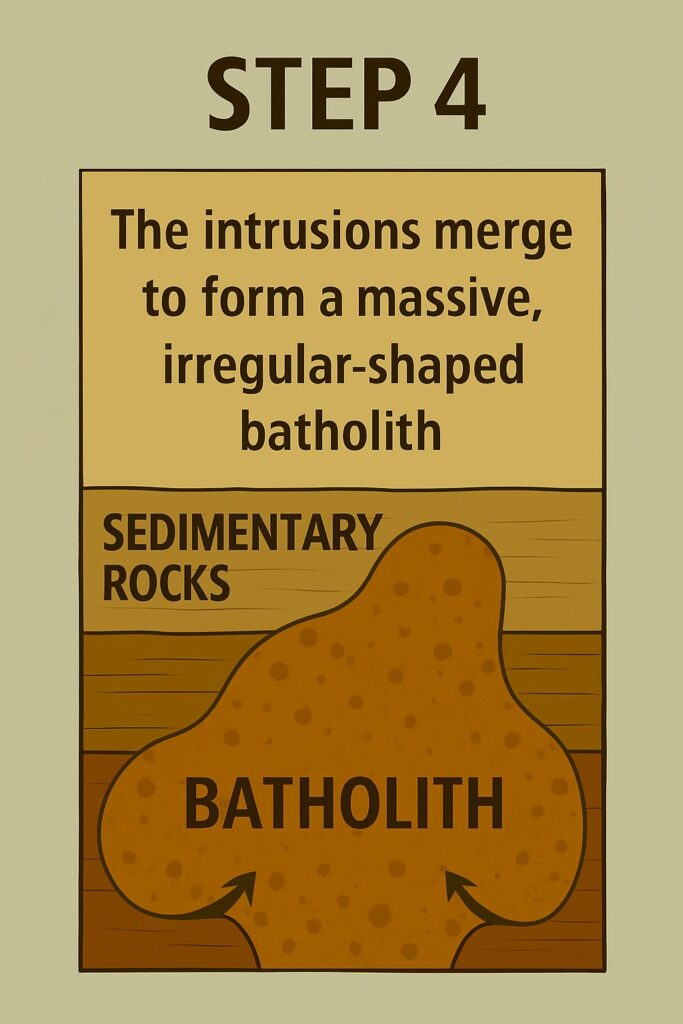
Stage 5: Exposure by Erosion
- Over millions of years, erosion removes the overlying rock layers, gradually exposing the batholith at the surface.
- These exposed batholiths can form mountain cores or plateaus.

Exposure of Batholith Rocks
Characteristics of Batholith Rock
-
Very large (exposed area >100 square kilometers)
-
Coarse-grained (e.g., granite)
-
Irregular shape, without clear boundaries
-
Found at continental interiors or along mountain chains

Batholith Rock image
Example of Batholith Rock Formation
1. Aravalli Range Batholiths (Rajasthan)
-
Includes granite batholiths formed during the Archean to Proterozoic eras.
-
Found around Mount Abu and the surrounding areas.
-
The rocks are rich in alkali feldspars and quartz.
2. Chotanagpur Granite Gneiss Complex (Jharkhand, Bihar, Odisha)
-
One of the largest batholithic regions in India.
-
Composed of ancient granite and gneiss rocks.
-
Rich in minerals like mica, feldspar, and quartz.
-
Geologically part of the Precambrian basement complex.
Laccolith Rocks
A laccolith is a smaller, dome-shaped igneous intrusion that forms when magma is injected between sedimentary layers, causing an uplift. A laccolith is a type of intrusive igneous rock formation. The magma forces the overlying rock layers to bend and uplift, creating a dome-shaped structure. Unlike batholiths, laccoliths are generally smaller in size, with diameters ranging from a few kilometers to tens of kilometers.
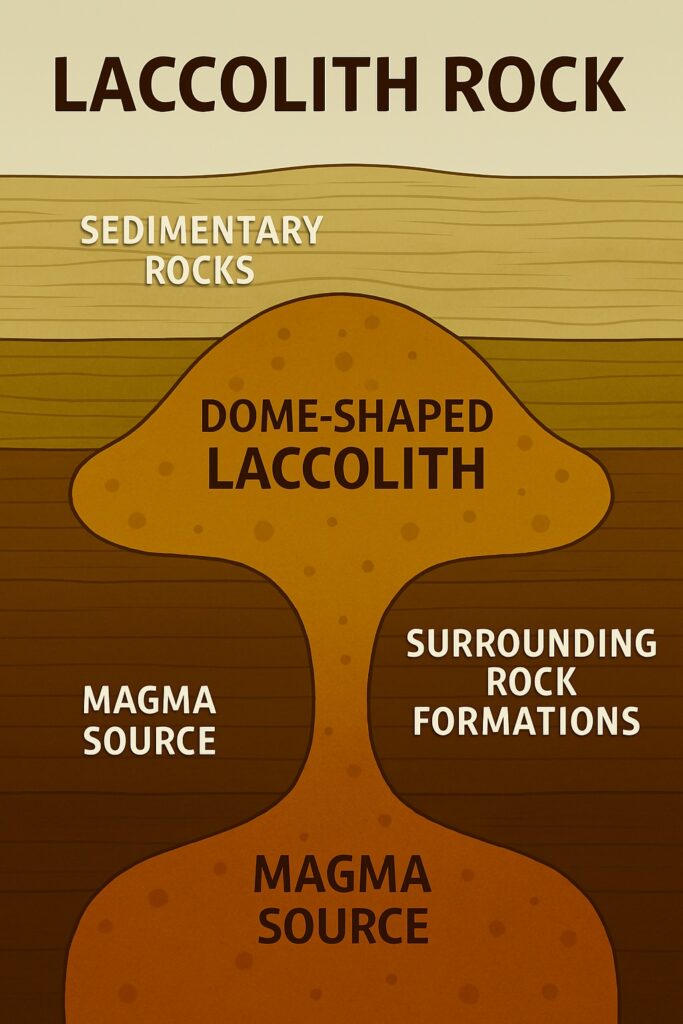
Formation of Laccolith Rocks
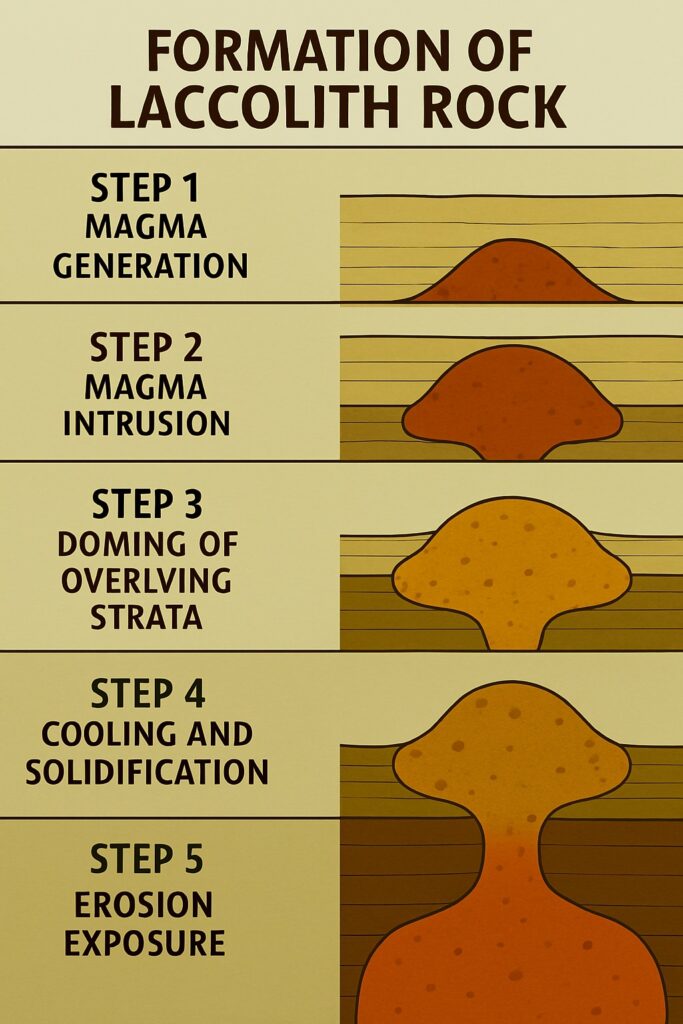
Examples of Laccolith Rocks
1. Mount Abu (Rajasthan)
-
Location: Sirohi district, Rajasthan
-
Rock Type: Granite
-
Significance: Though often categorized as a batholith, parts of the Mount Abu granite dome exhibit laccolithic features, where the granite has intruded and domed overlying metamorphic rocks.
-
Structure: Dome-like, possibly laccolithic in shape due to upward bulging.
2. Pachmarhi Hills (Madhya Pradesh)
-
Location: Satpura Range, Madhya Pradesh
-
Rock Type: Mostly sandstone and volcanic intrusions
-
Significance: Some of the igneous intrusions in this region are believed to have formed sill- and laccolith-like structures, causing gentle uplift of sedimentary rocks.
Comparison

In summary, batholiths and laccoliths are intrusive igneous rock formations, but they differ in terms of size, shape, formation process, and geological features. Batholiths are large, irregular masses that often form mountain cores, while laccoliths are smaller, dome-shaped structures formed by the intrusion of magma between layers of sedimentary rock.
